The verdict: Redesigned for 2017, the Porsche Panamera remains a maverick among high-end luxury sedans — a maverick with idiosyncrasies.
Versus the competition: The liftgate is one distinguishing characteristic of many, running the gamut from impressive to a little bizarre.
The Panamera comes as a four-seat hatchback in regular or extended wheelbases, the latter dubbed Executive. Compare them here. Typical of a pricey luxury car, mechanical configurations are numerous: Porsche offers three engines, three suspensions and rear- or all-wheel drive for 2017, and there are two plug-in hybrids and a Panamera Sport Turismo wagon coming for 2018 (see our First Drive here). Prices for the 2017 Panamera range from the mid-$80,000s to well over $200,000 if you indulge in Porsche's cornucopia of near-bespoke options. Our six-figure test car was an all-wheel-drive Panamera 4S with the mid-level engine and suspension.
Slimmer Rear
Gone is the old Panamera's bulbous rear end, replaced with svelte lines past the B-pillar. The redesign still looks like a Panamera, but it has the nip-and-tuck job the first generation badly needed. A few key dimensional changes reduce the bloat: Overall roof height is a skosh higher near the B-pillar but down nearly an inch at the rear axle, making for a more aesthetic roofline. Throw on thinner taillights with a connecting LED strip, to emulate the current 911, and it's all easier on the eyes. Executive variants add 5.9 inches in wheelbase, and all models offer a panoply of wheels (19 to 21 inches), lighting configurations and bumper designs.
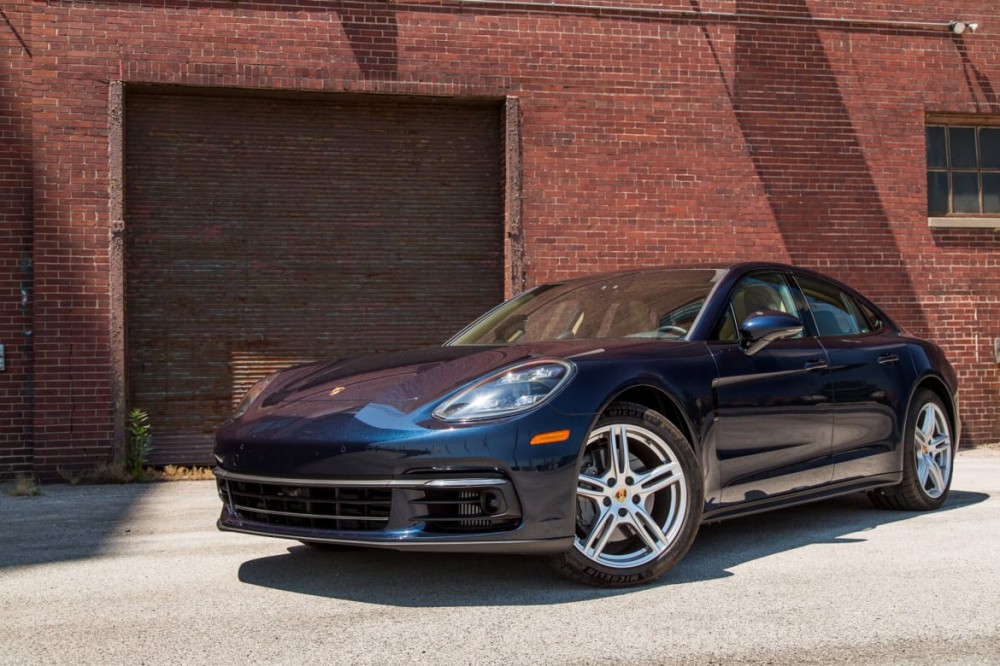
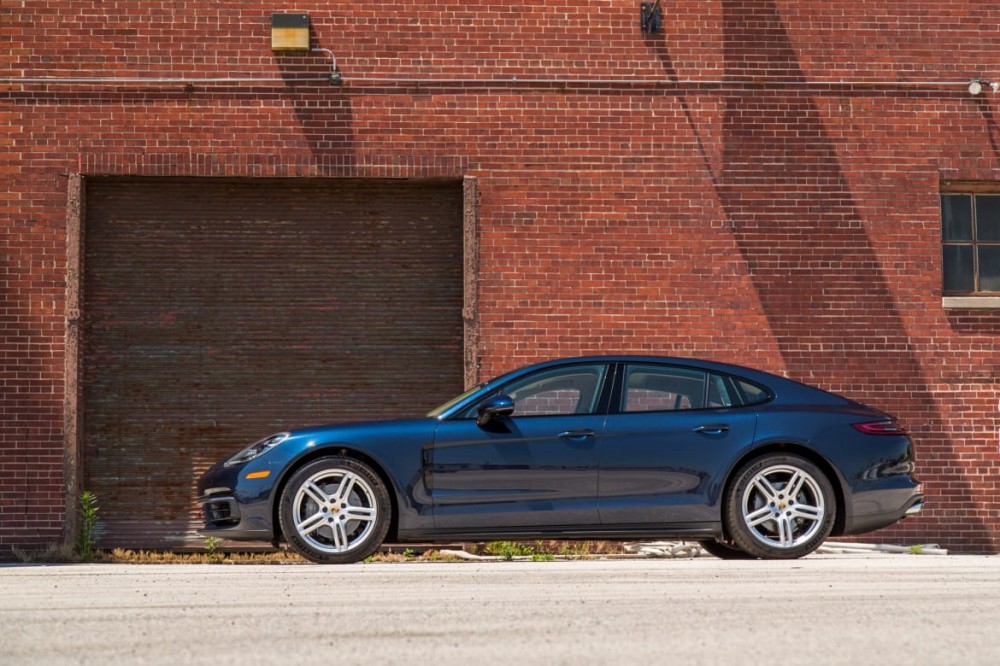
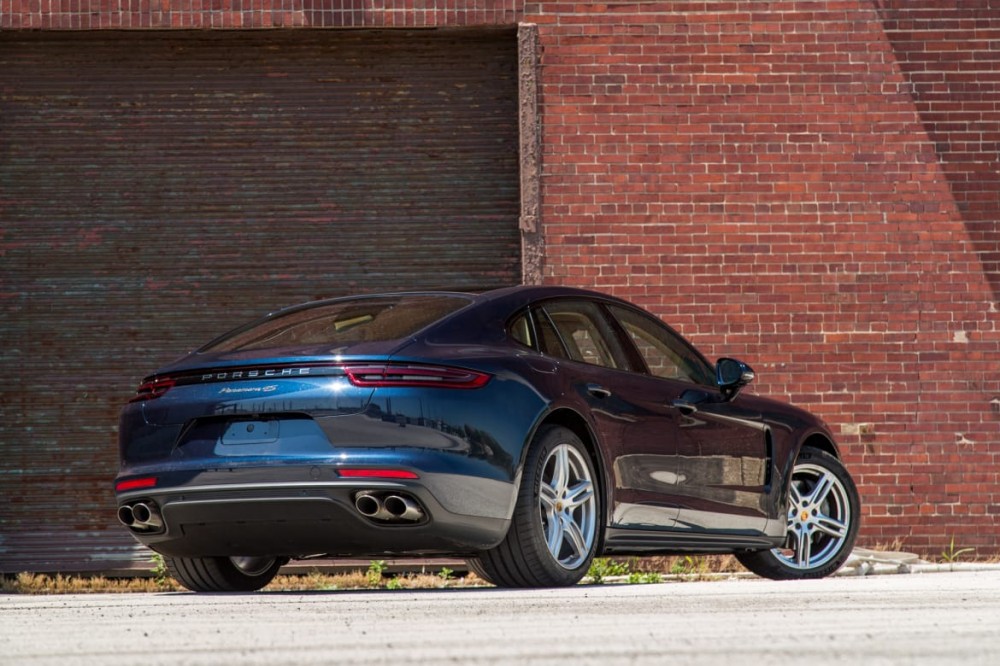
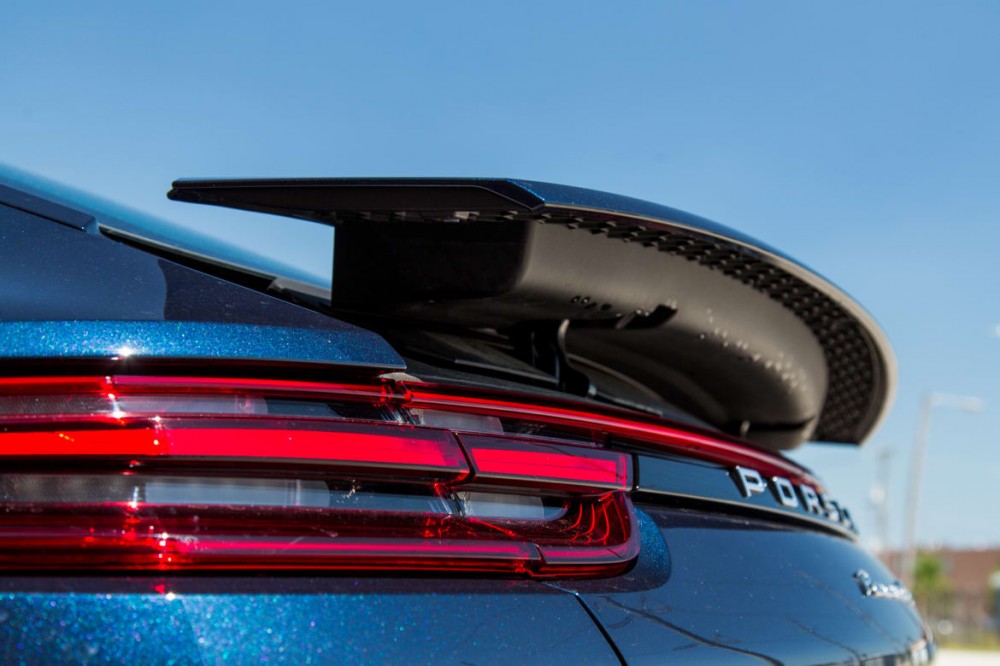
Strong Power
With its twin-turbo 2.9-liter V-6 engine (making 440 horsepower and 405 pounds-feet of torque), the Panamera packs gratifying low-end power, energetic revving and an exhaust note that evokes exotic cars.
One Cars.com editor found overall power more modest than the numbers suggest, but others observed plenty of it, especially in the drivetrain's two sportier driving modes. Dialed to such settings, the transmission — a new eight-speed version of Porsche's dual-clutch PDK automatic — can occasionally ram into gears with unexpected suddenness, but it's an otherwise seamless unit, downshifting two or three gears at once when you hit the gas at cruising speed. I just wish the Panamera's Normal driving mode would summon such lively response. It introduces noticeable drivetrain lag, a factor that may prompt you to drive only in one of the sport modes, gas mileage be damned.
Shoppers can also get a single-turbo 3.0-liter V-6 (330 hp, 331 pounds-feet of torque) or a twin-turbo 4.0-liter V-8 (550 hp, 567 pounds-feet of torque). All-wheel drive is optional with the base V-6, which otherwise comes with rear-wheel drive; the other engines pair only with AWD. Porsche says the base car hits 60 mph in 5.4 seconds, which is certainly quick enough. The Panamera 4S gets there in the low 4s, while the Turbo hits the mark in a silly-quick 3.4 seconds. Those times go well beyond necessary acceleration, but if maximum power is your thing, no flagship four-door comes close to the Tesla Model S P100D (which Tesla says gets to 60 in as little as 2.8 seconds).
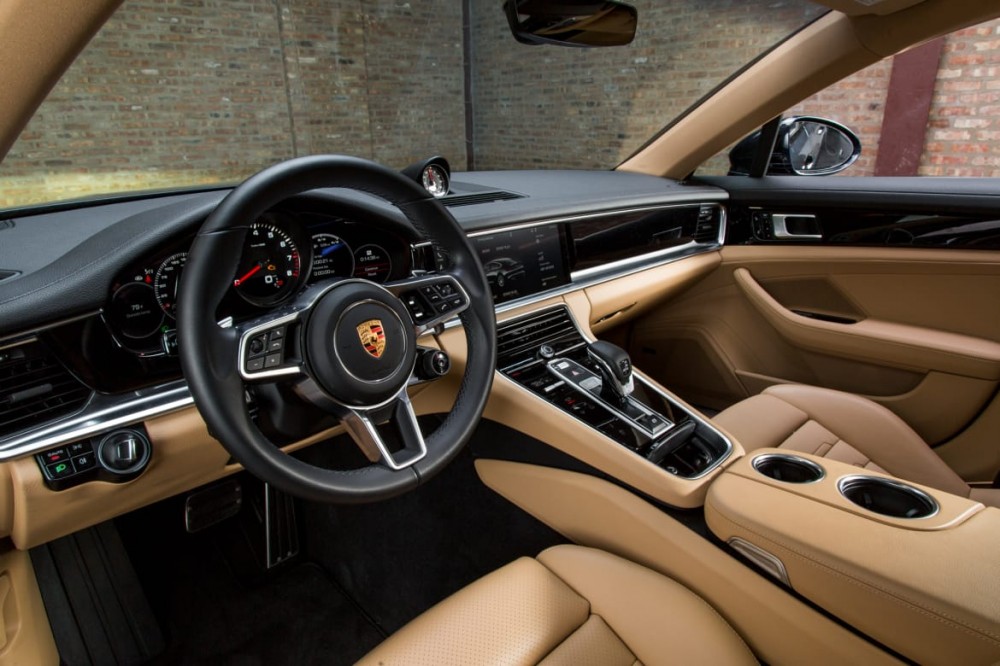
Ride & Handling
The Panamera's handling limits are distant: You'd really have to push the car hard on a racetrack to slide it around, which we didn't have an opportunity to do in our time with it. Still, its reflexes suggest fairly neutral balance. The steering feels a touch numb, but the nose tracks well in sweeping curves even with abrupt steering motions — situations that tend to produce push. The tail exhibits little unexpected movement, and broken pavement seldom upsets things. Much credit goes to our test car's Michelin Pilot Sport 4 high-performance summer tires, which stuck like glue.
With its optional air springs and standard adaptive shock absorbers, the Panamera's controlled ride is comfortable enough, but it's firmer than some shoppers in this class may prefer. Those looking for deliberate softness should consider the cloudlike suspension tuning in a Mercedes-Benz S-Class or BMW 7 Series. The Panamera rides a touch busy at low speeds, a sensation that evokes the segment's less pillowy contenders, like the Audi A8 and Jaguar XJ.
Coil springs are standard with the adaptive shocks. Air springs and active stabilizer bars are separate options. Our test car had the air springs but not the active stabilizer bars, which should theoretically minimize body roll even more, but that was hardly a problem in our Panamera. Other performance options run the gamut, from an electronically locking rear differential to massive carbon-ceramic brakes.
Curiously, Porsche didn't throw the long ball on self-driving capabilities. There are technologies out there — ranging from Cadillac's Super Cruise to Audi's forthcoming Traffic Jam Pilot — that promise hands-free driving under certain conditions. Tesla says its current cars will be capable of much more than that with future software updates. But the Panamera remains a hands-on, driver-needed experience. Brand ethos notwithstanding, that's disappointing for a redesigned car at this price.
Lane departure warning and steering assist are available, and the Panamera's adaptive cruise control can adjust speed and gear selection based on your navigation route over the next 1.8 miles. But the car doesn't combine its various features into a selectable mode (often using the term "pilot") as some brands do. Porsche officials told us the Panamera lacks true lane-centering steering, and it won't drive itself under any circumstances. I'm underwhelmed.
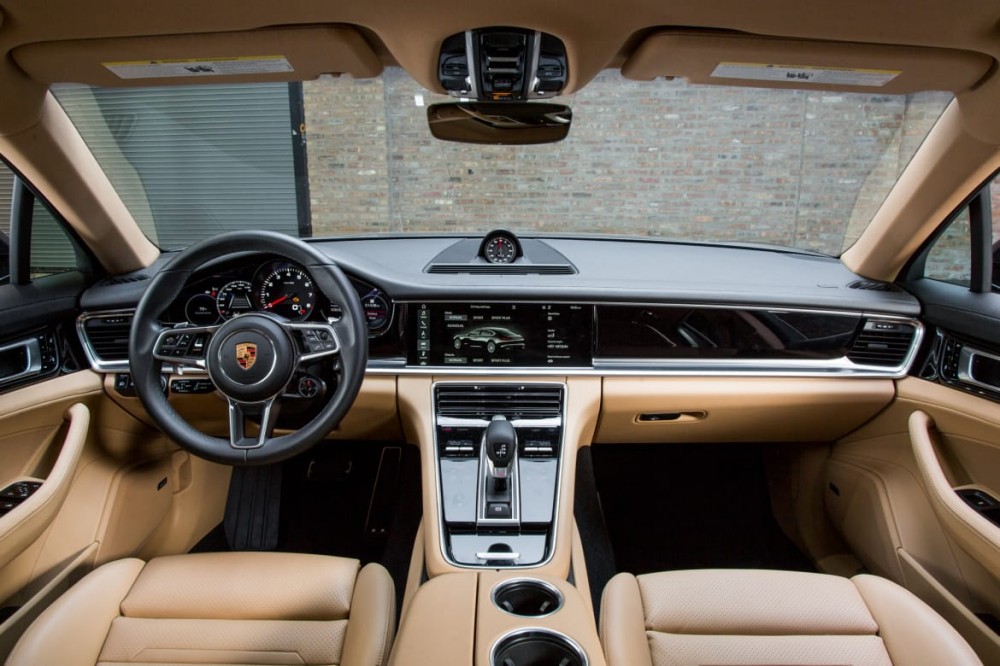
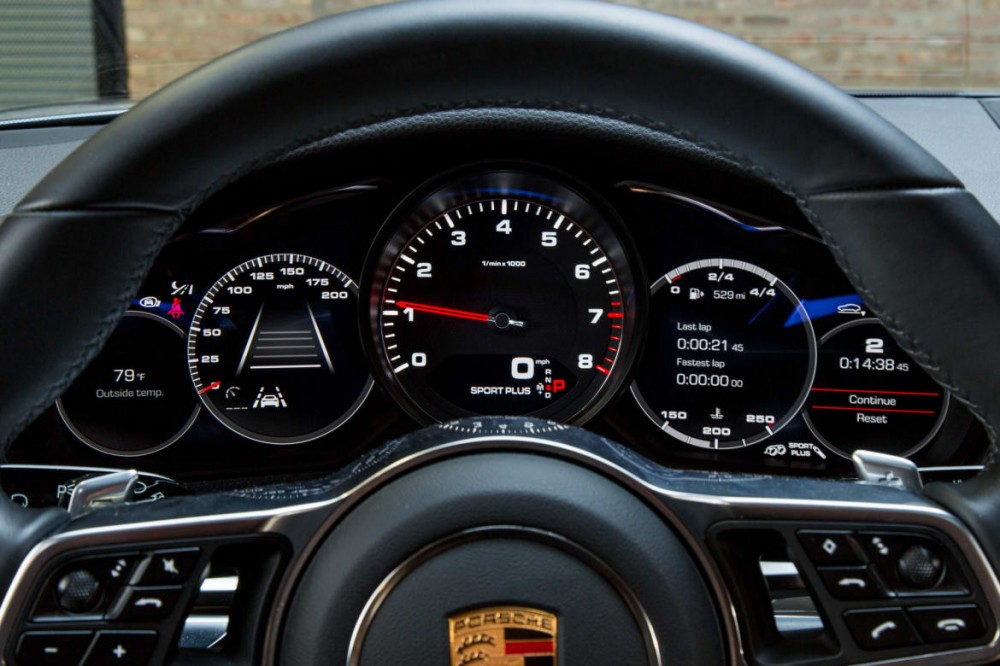

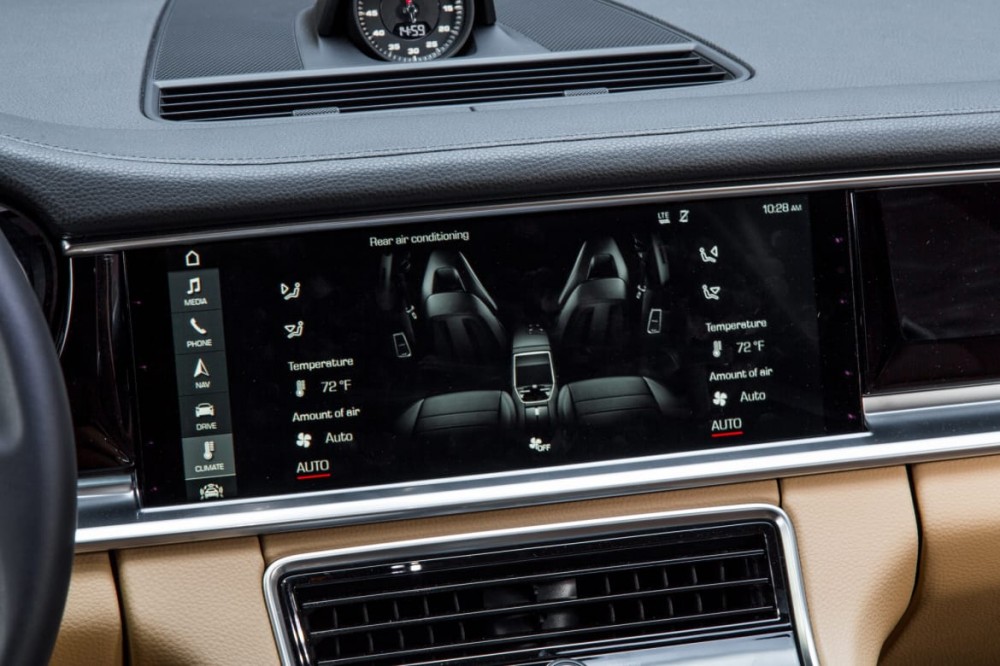
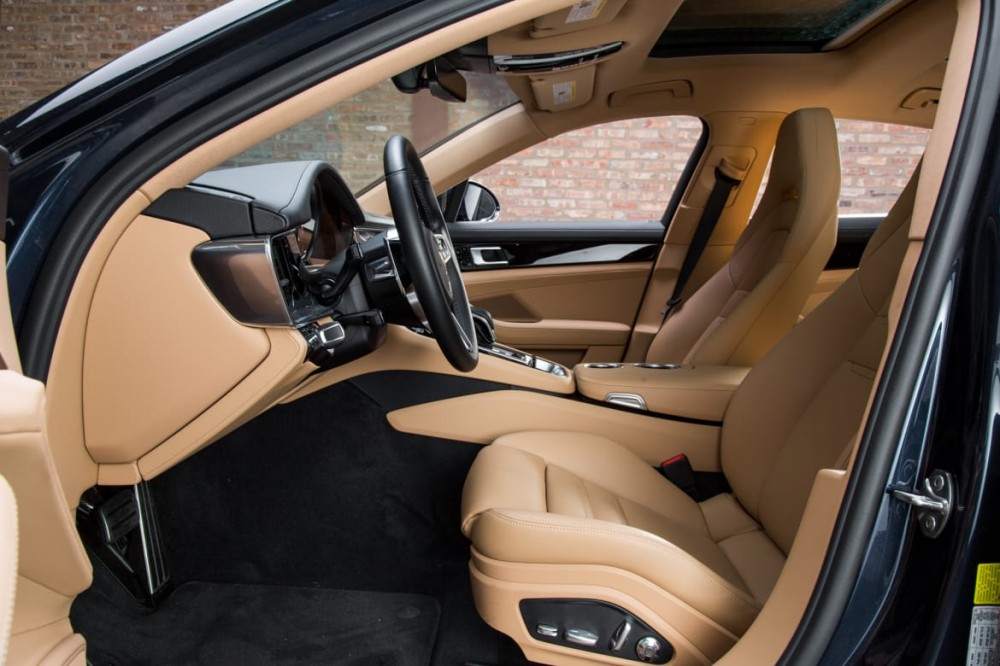
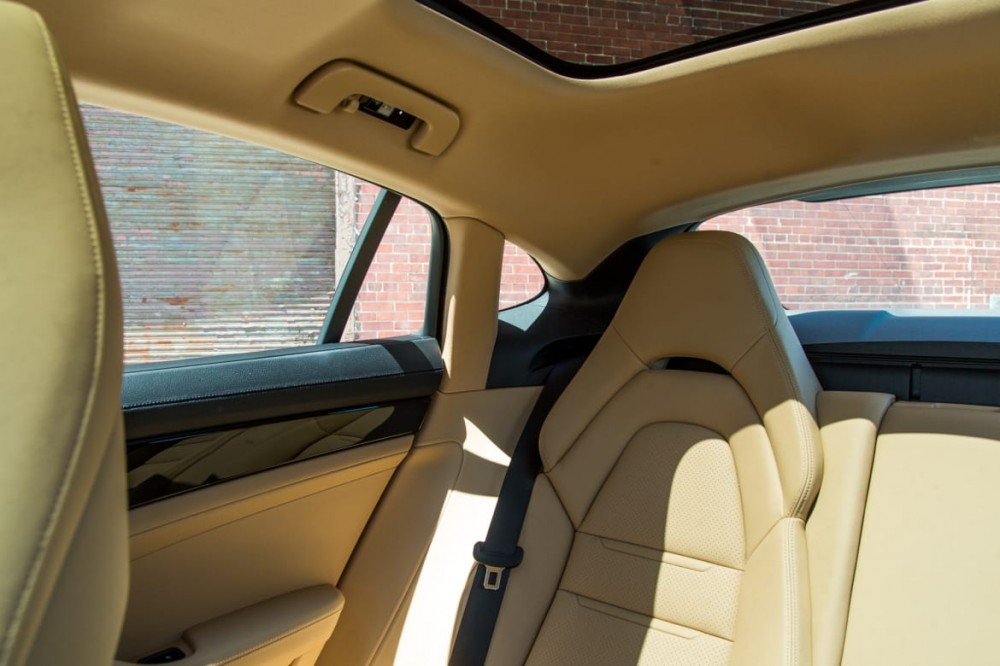
The Inside
The Panamera's remodeled interior is dazzling to behold, but some of the novelty wears thin fast. Like before, the dash drops into a flying buttress of a center console — a layout that would crowd knee space were it not for the cabin's generous width. Gone is the old Panamera's button-crowded console, but its replacement might be worse: capacitive-touch buttons dotting a piano-black panel, with few storage areas.
Some buttons have detents to give feedback, and there are mechanical controls for temperature, volume and tuning, yet problems persist — some inherent, some solvable. The panel is ripe for dust and fingerprints, and its touch-sensitive shortcut keys are a clear step backward from physical controls. The 12.3-inch touchscreen above it is fast and reasonably intuitive, but it lacks Android Auto capability (Apple CarPlay is optional). To adjust the vanes of the center air vents, you have to access a separate menu and drag your finger around on a screen to change the louvers. It remembers the prior position with automatic climate control, but if you want to move the vanes, it's a pain. I suppose a plastic nub, like every other vent has, would have made far too much sense.
As expected for a car in this price range, cabin materials are lush, with vinyl-wrapped portions of the upper dash and doors that could pass for real leather. (Real leather is optional on both areas, as well as on surfaces as obscure as the steering column.) The standard seats are heavy on bolstering but comfortable overall, though tall drivers may find limited adjustment range; my 6-foot frame needed the driver's seat nearly all the way back. Power-adjustable seats are standard, and the optional sport seats have additional bolstering and more power adjustments.
The panel is ripe for dust and fingerprints, and its touch-sensitive shortcut keys are a clear step backward from physical controls.
All four seats sit relatively low to the floor. While drivers might appreciate this, adult passengers in back will find their knees uncomfortably elevated — especially compared with the expansive backseats elsewhere in the class. Legroom in the regular-wheelbase model is otherwise good, and there's decent headroom given the redesign's lower roofline. If you plan to haul kids, go here to see our evaluation of car-seat provisions. (As of publication, Porsche hasn't provided specs for rear legroom on the Executive model, but the prior generation added about 5 inches versus standard Panameras.)
The Panamera's body style pays clear dividends in cargo room. The trunk and 40/20/40-split folding backseat have practical advantages versus many sedan competitors, most of which lack folding seats altogether. But you pay for it in diminished rearward visibility, with thick C- and D-pillars and a tiny rear window. The two rear seats have fixed head restraints, which block even more of the view. Pick your poison.
A power liftgate is standard. Executive models have similar trunk volume but 11 percent more space with the seats folded (52.6 versus 47.3 cubic feet). If you need to seat five, next year's Sport Turismo will offer a three-position rear bench.
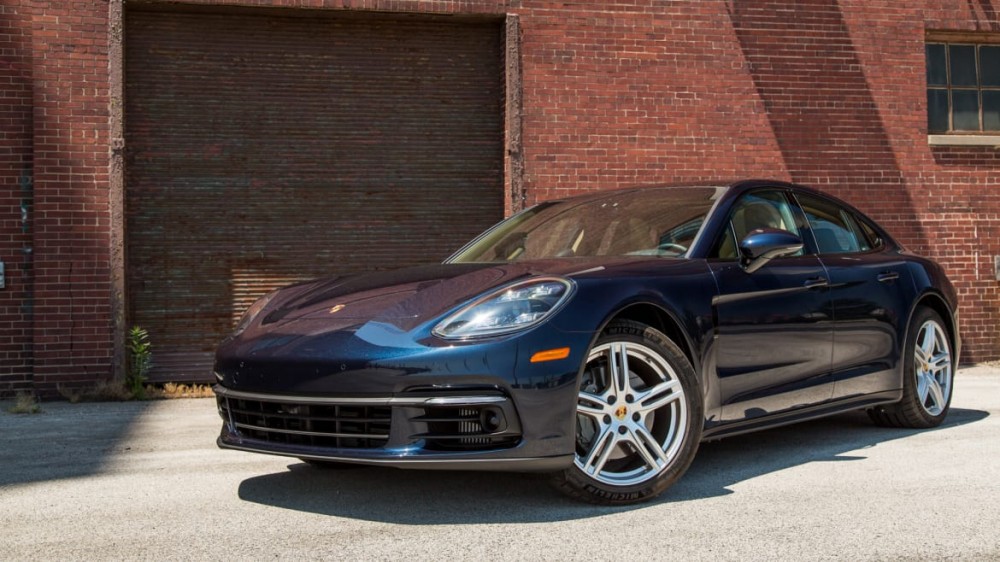
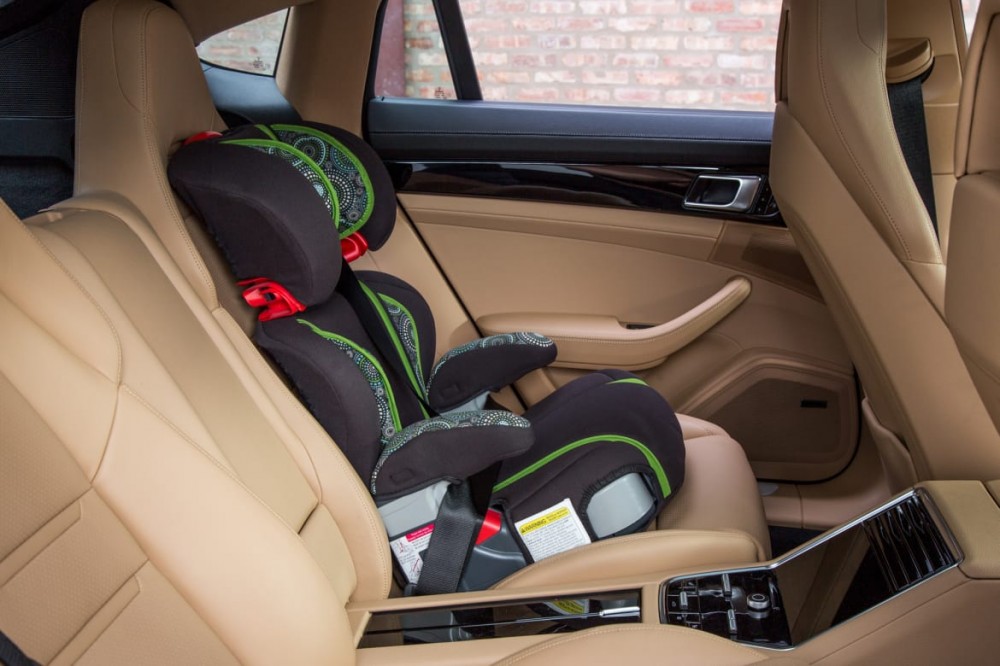
Still a Maverick
Slather on the options and you can get a Panamera with quad-zone climate control, leather wrappings as far as the eye can see, massaging seats and all manner of comforts for rear passengers — but it will set you back a healthy six-figure sum. At that, Porsche's redesigned four-door remains a notable outsider to many flagship sedans. It drives like a brash alternative, and it looks the part, too — outside and in. Peculiarities aside, that should continue to draw shoppers.








